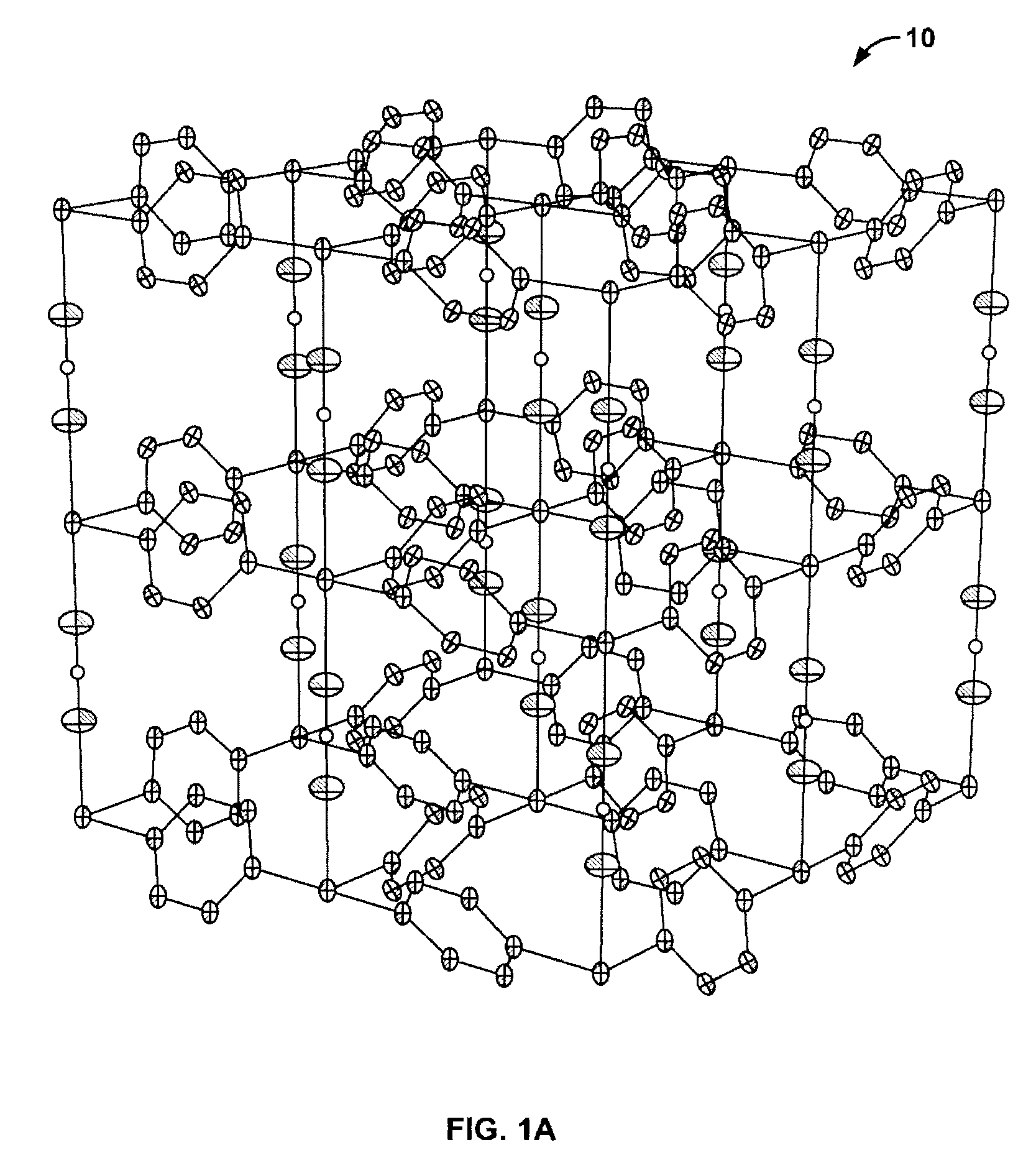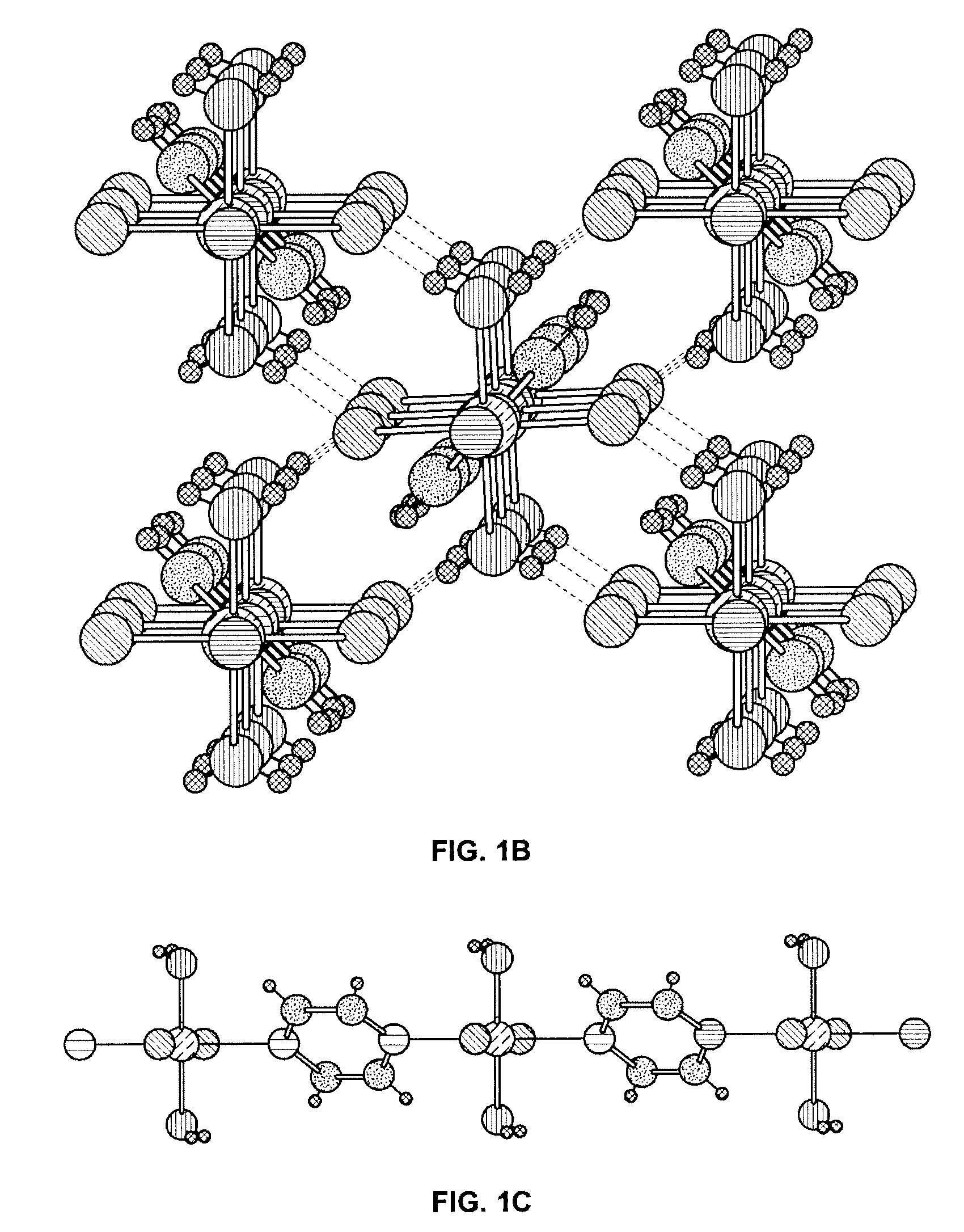Magnetic coupling through strong hydrogen bonds
a hydrogen bonding and magnetic coupling technology, applied in the field of spintronics, can solve the problems of inability to observe long-range magnetic order coupled through hydrogen bonding, irregular interfaces and defects in epitaxial approaches, and failure to observe long-range magnetic order
- Summary
- Abstract
- Description
- Claims
- Application Information
AI Technical Summary
Benefits of technology
Problems solved by technology
Method used
Image
Examples
Embodiment Construction
[0012]Several examples of a polymer material which enables magnetic coupling through strong hydrogen bonds are shown at 10 in FIGS. 1A, 1B and 1C. The [Cu(HF2)(pyz)2]BF4 polymer material 10 consists of rare μ1,3 bridging HF2− anions and μ-pyrazine ligands leading to a 3D pseudo-cubic framework that antiferromagnetically orders below about 1.54 K.
[0013]The bifluoride ion, i.e., HF2−, contains a two-coordinate H-atom exhibiting the strongest known hydrogen bond. Molecular orbital theory and various structural investigations suggest that this molecule can be best described as a hydrogen cation that is bridging two fluoride anions as in F−...H+...F. Resonance modes consisting of coordinate covalent interactions such as F—H...F− and F−...F—H may also be important (see FIGS. 5A and 5B) for representations of HF2− as contemplated by valence bond theory and molecular bond theory, respectively. In the KHF2 and the NH4HF2 salts, the H...F bond lengths in the HF2− anion are equivalent at 1.14 ...
PUM
| Property | Measurement | Unit |
|---|---|---|
| Structure | aaaaa | aaaaa |
| Electric charge | aaaaa | aaaaa |
| Magnetism | aaaaa | aaaaa |
Abstract
Description
Claims
Application Information
 Login to View More
Login to View More - R&D
- Intellectual Property
- Life Sciences
- Materials
- Tech Scout
- Unparalleled Data Quality
- Higher Quality Content
- 60% Fewer Hallucinations
Browse by: Latest US Patents, China's latest patents, Technical Efficacy Thesaurus, Application Domain, Technology Topic, Popular Technical Reports.
© 2025 PatSnap. All rights reserved.Legal|Privacy policy|Modern Slavery Act Transparency Statement|Sitemap|About US| Contact US: help@patsnap.com



